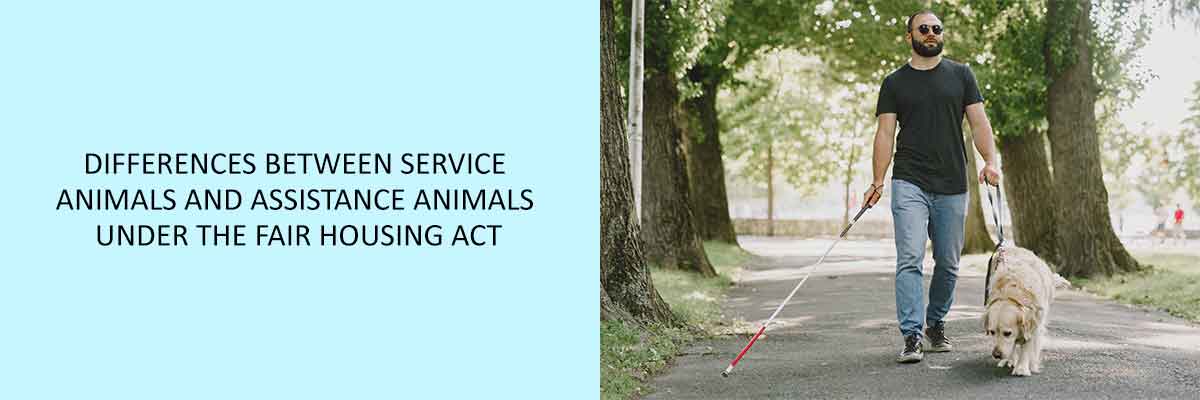Under the Fair Housing Act, housing providers are prohibited from refusing to rent to people with disabilities because of their disabilities or because they have a type of animal that is trained to assist them with their disabilities. This law applies to housing providers that receive federal funding. It also applies to people who are renting, buying, or leasing a home, apartment, condominium, or mobile home. However, housing providers are not required to allow assistance animals to remain if, for instance, they pose a direct threat to the health or safety of others, if they cause substantial physical damage to property and they are not housebroken.
People with disabilities may keep assistance animals in their homes, even if landlords have a no pet policy. However, landlords may change housing policies, like pet restrictions, if the modifications are necessary to allow a person with a disability to use and enjoy the housing. Service animals are characterized as animals trained to do a particular task for their owner. Assistance animals are dogs or other animals that provide emotional support and are not trained to perform specific tasks.
Service Animals
Service animals are animals that are trained to assist people with disabilities. They can help people who have visual impairments by leading them around, alerting them to sounds, and helping them open doors. They can also help people who have mental health conditions by calming them during a panic attack. There are a lot of misconceptions about service animals. They’re not the same as pets, and they’re not just for people with disabilities. People with conditions like diabetes and epilepsy also sometimes use service animals. A service animal is a working animal and is not considered an emotional support animal. Service animals are allowed in public places that are normally off-limits to pets.
Service animals are a part of everyday life for many people, but not everyone understands how to interact with them. You might see one on a plane, at the mall, or in a restaurant, and wonder what it is doing there. A service animal is a helpful animal, such as a dog or miniature horse, that assists a person with a disability in their day-to-day activities. A service animal is trained to perform tasks that a person cannot do for themselves because of their disability.
Assistance Animals
An assistance animal is a companion animal that a person with a disability uses as an aid in performing daily activities. In the United States, assistance animals, or “assist animals,” are defined as dogs or miniature horses that are individually trained to do work or perform tasks for an individual with a disability. An animal that meets this definition is sometimes called a service animal. However, the use of the term “service animal” in the ADA is limited to animals that are trained to assist people with disabilities in the performance of tasks.
Final Words
Service animals and assistance animals are technically not pets. However, the landlord can ask for a security deposit from the tenant for any kind of damage caused by the animal to the house.
To know more about service animals, assistance animals, and the Fair Housing Act (FHA), attend the Compliance Prime webinar.


